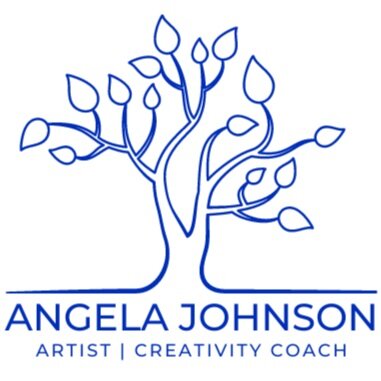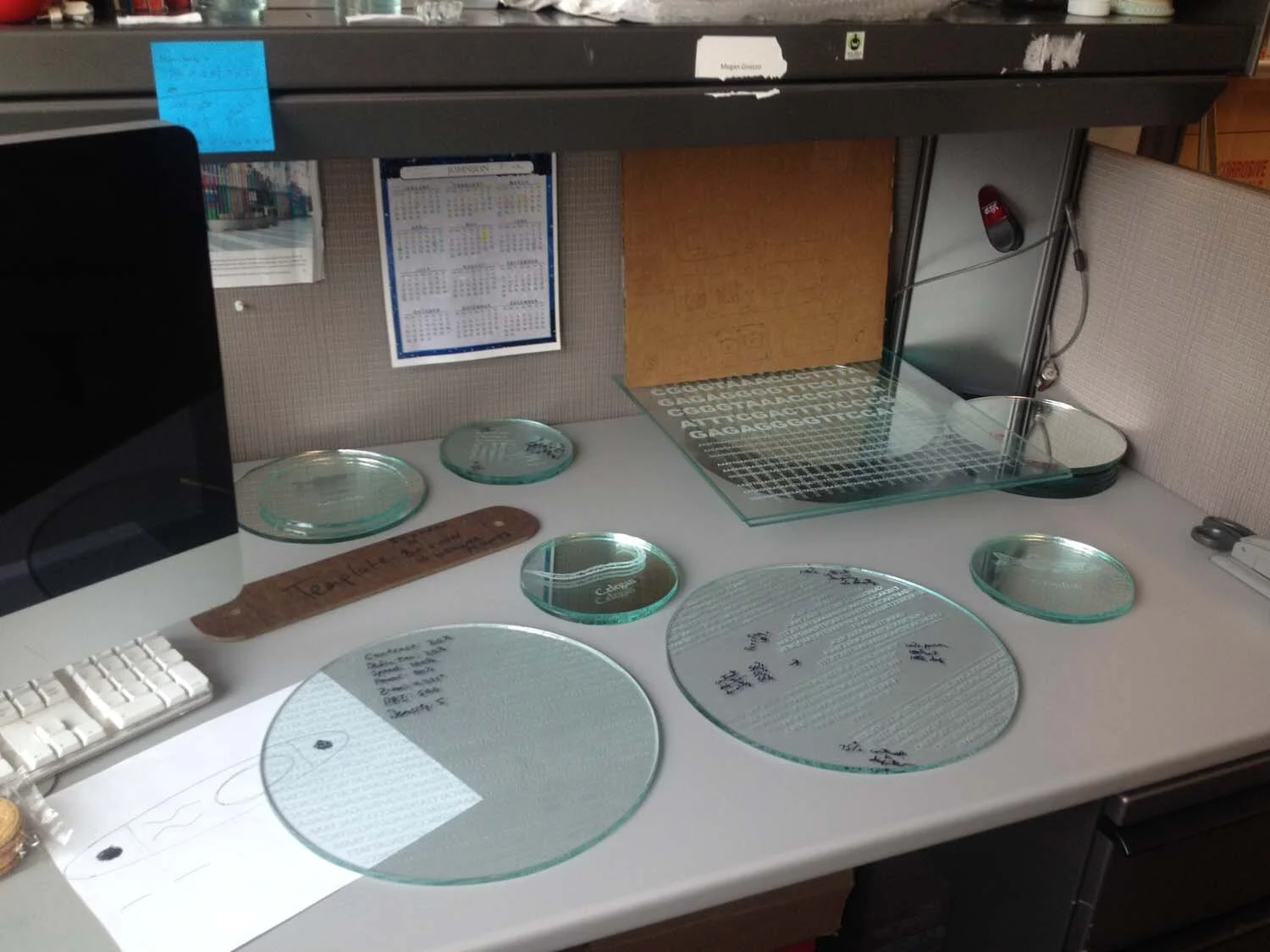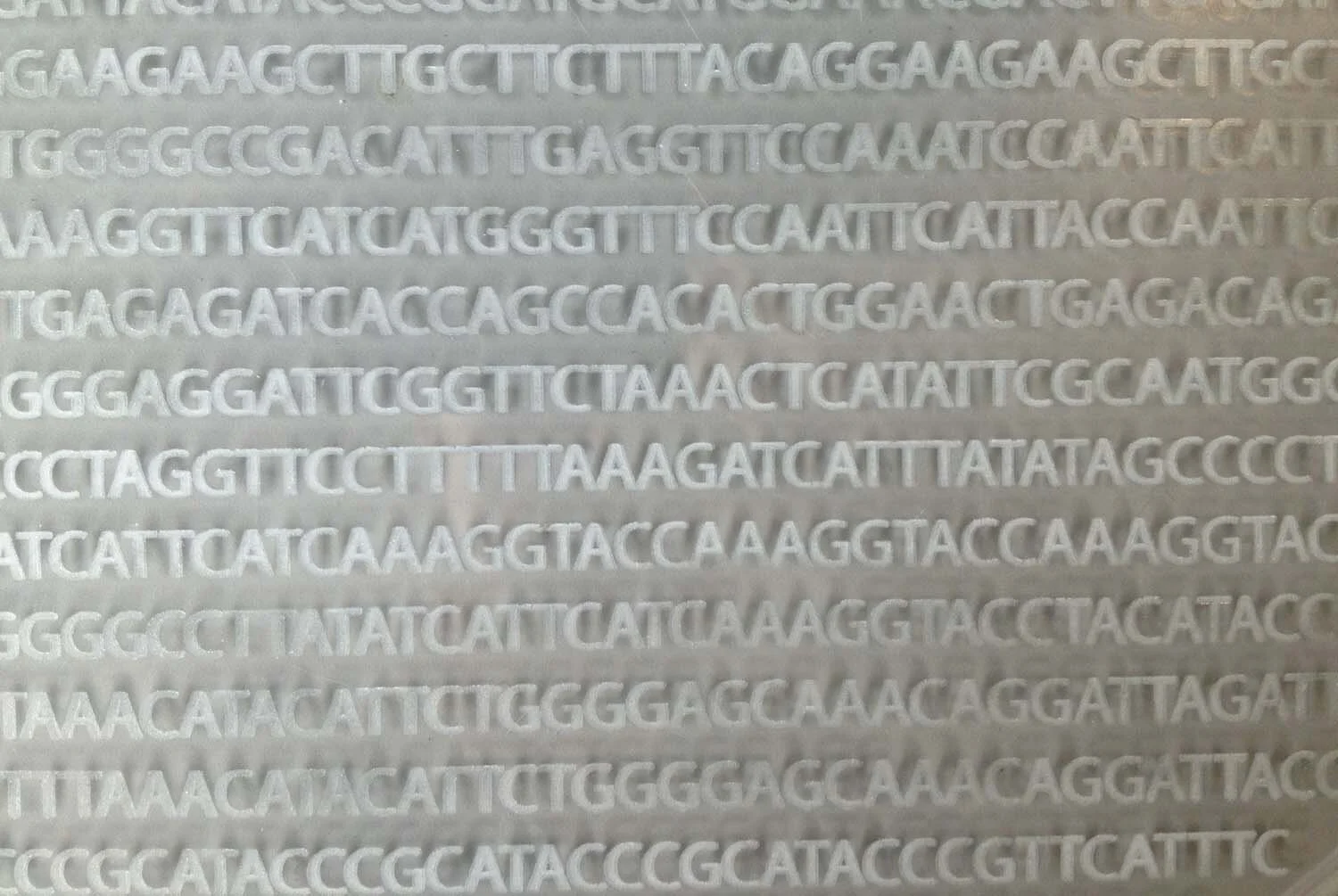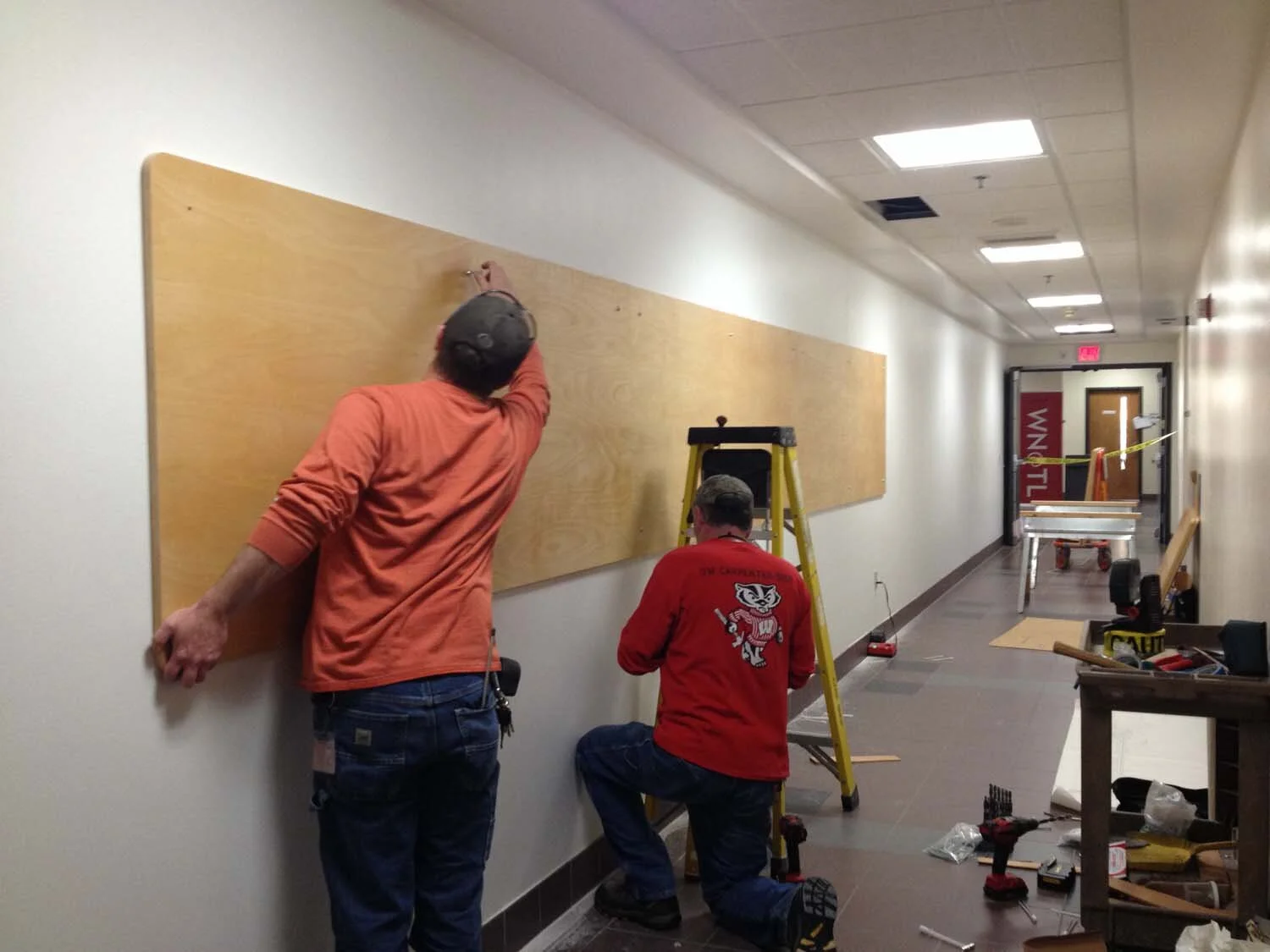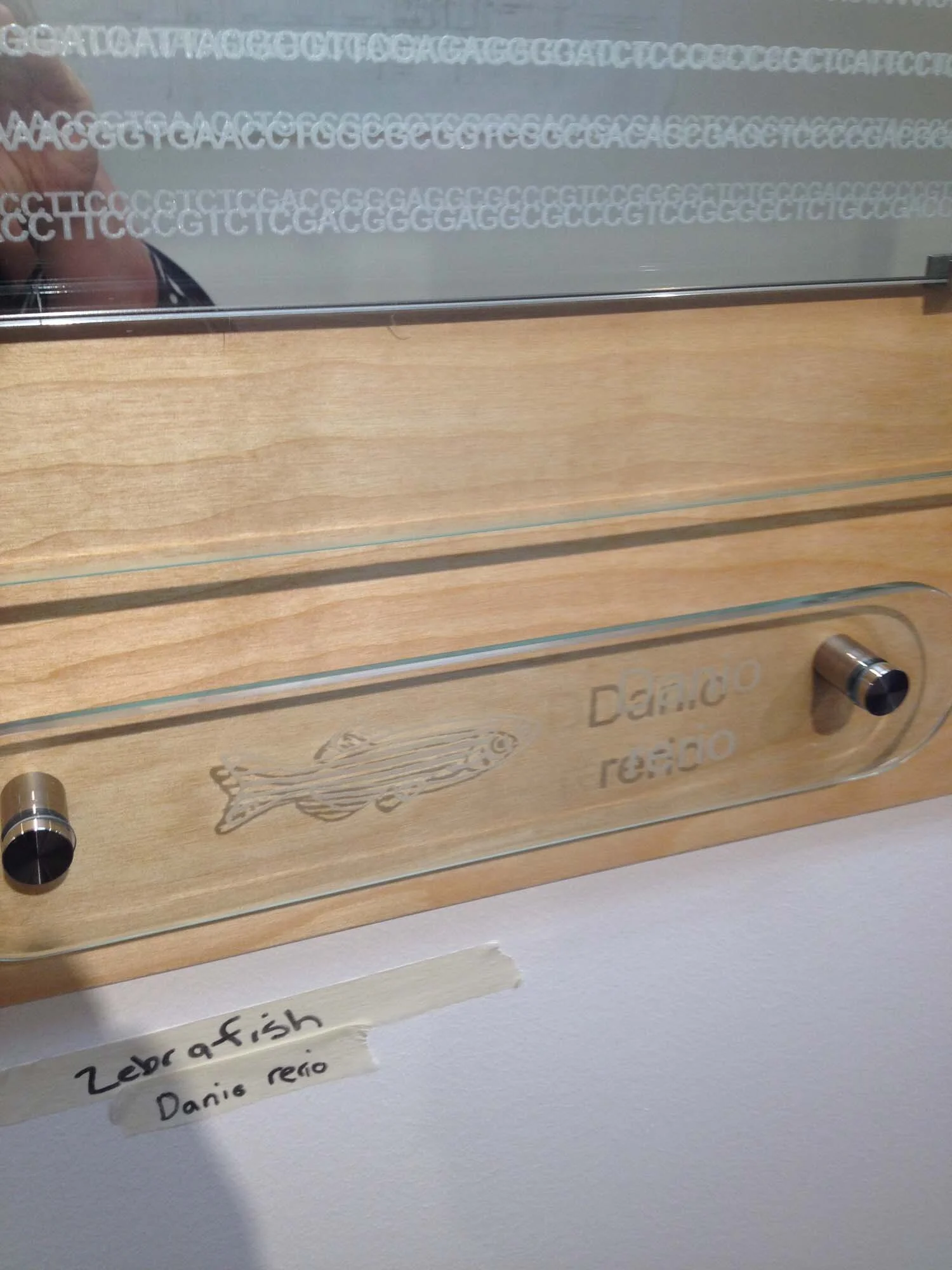Nature is Healing at Olbrich Botanical Garden's Nature-2022
Nature is Healing created a (safe outdoor) space for the community to come together and process the collective grief from the pandemic, providing an opportunity for healing through shared experience. In life cycles and natures' seasons, the passage of time and the wind is always weaving and moving. Consider the non-permanence of everything, including us, perhaps we are more connected to nature and each other than we realize.
The 75 cyanotype cyanotype panels in this installation feature imagery of plants native to Wisconsin, sourced from Olbrich Botanical Gardens' plant collection, including: scotch pine needles, read oak leaves, milkweed, vernonia, echinacea, bouteloua gracilis (grass), and eryngium yuccifolium.
Materials: Cyanotypes on silk and cotton
Justin Bitner and Kelsey Voy, Collaborators
Funding provided by the Madison Arts Commission Blink Grant Program
Genetic Reflections—2018
“Genetic Reflections” is a public science art installation created by Madison-based artist Angela Johnson in collaboration with UW-Madison genetics professor Ahna Skop. The science art piece is designed to highlight genetic research on campus and encourage visitors to interact and support science. It is permanently installed outside of the UW-Madison Genetics/Biotech Auditorium, across from room 1360. Funding and space was generously provided by the National Science Foundation (MCB-1716298), MRSEC, and the University of Wisconsin-Madison Biotechnology Center.
NOTE: A traveling exhibition of Genetic Reflections is available. CLICK HERE for more information.
Scale drawing of 40 foot installation
Inherent Legacy—2016
This current body of work draws stylistically from the practice of Cabinets of Curiosity. Historically these cabinets included objects from natural history, cultural artifacts, relics, works of art, and antiquities. This form of collecting during the Renaissance was the precursor to the modern day museum. In my own cabinet, I am exploring the connections we have to our ancestors and to the natural world. Focusing on family and memory, I am visually exploring what we carry with us through the objects we inherit from previous generations, including genetic, physical and emotional traits. I am revealing the inherent values held by generations past through the lens of my own.
The cabinet is composed of family photographs and objects, along with my own contemporary photographs, which use alternative processes. I began this work by mining family photo albums from the late 19th century. They revealed images of my great-grandparents and other relatives, whose lives in south central Wisconsin were so different than my own. I look for a glimpse of myself within the familiar faces of my ancestors in these photographs of wedding days, graduations, Army profiles and candid moments on the farm. I see my grandmother as a baby and notice that my father has my great-great grandfather’s ears. To what degree is who we are determined by whom and where we come from?
In my great-grandmother Pearl’s crystal etched wine glasses, I get a glimpse of how she lived and each time I use them I honor her memory. I am deeply interested in legacy, shared memory and also how we forget. What happens to this infused memory, which is placed on objects when no one preserves them? What legacies do we create over time with the memories and objects we pass on through each generation?
Translation—2015
This series investigates the intersection between photography and scientific concepts. I strive to visually engage viewers in the correlation and similarities between art and science, two seemingly disparate worlds. In the creation of this work, I am collaborating with Professor Ahna Skop, at the University of Wisconsin-Madison. Skop runs a lab in the Biotech Genetics Building on campus that studies C.Elegan (worm) embryos as a model organism looking at many cellular processes including mitosis. Using a pipette as an artistic tool I “paint” with liquid bacteria that I have added color pigment to. The bacteria is a non-invasive strain of E.coli and is deposited onto agar plates. Using high-powered microscopes as cameras I compose imagery of these tiny microcosms. I then photo document the bacterial growth as well as the breakdown of the agar over days and weeks. These microscopic images of bacteria over time take on the appearance of macroscopic forms in nature such as coral reefs, snowflakes, or topographical maps. I then combine this imagery with found objects in a “Cabinets of Curiosity” manner, giving an installation based feel. My background in museum design helps to bridge complex science concepts through art in order make the content more accessible to the general public. These past experiences strongly influenced my interest in creating artistic work that engages science as well.
Bottle Cap Project at Madison Children's Museum—2009/2010
This large scale installation project came about when Angela worked at Madison Children's Museum and in preparation of the "new building" opened in 2010, staff wanted elementary kids from Madison schools to create small pieces of artwork to be part of a bigger mosaic installation to give them a sense of ownership of having a piece of collaborative art in the museum. The idea was to show what creatively can be built together.
Angela oversaw the project and worked with the development team to write a grant to secure funding. The bottle caps were donated from Crown Cork and Seal, a bottle cap manufacturing company in Indiana where Angela's uncle Jim worked.
All 32 elementary schools in MMSD were part of this project through their art teachers.
Angela wrote sample K-5 lesson plans, secured supplies for the project and held workshops for teachers.
Students made two caps, one to keep and one to go in the installation.
There were also outreach events in the community so that community members could make caps as well.
Angela collaborated with former Shabazz High School Art teacher, Martha Velasquez and her students to design bottle cap mosaics. The mosaics of caps represent a range of flora and fauna that can be found in WI. In addition to the caps, other mosaic materials including costume jewelry and decorative glass and plates were used.
Local artist Andrea Bird Poist filled the caps with resin.
During installation volunteers from the community, including a team from the Madison Community Foundation came to help attach caps, add grout and dremel around the pieces.
There are more than 15,000 bottle caps in this permanent installation that lives in the art studio at Madison Children's Museum.
